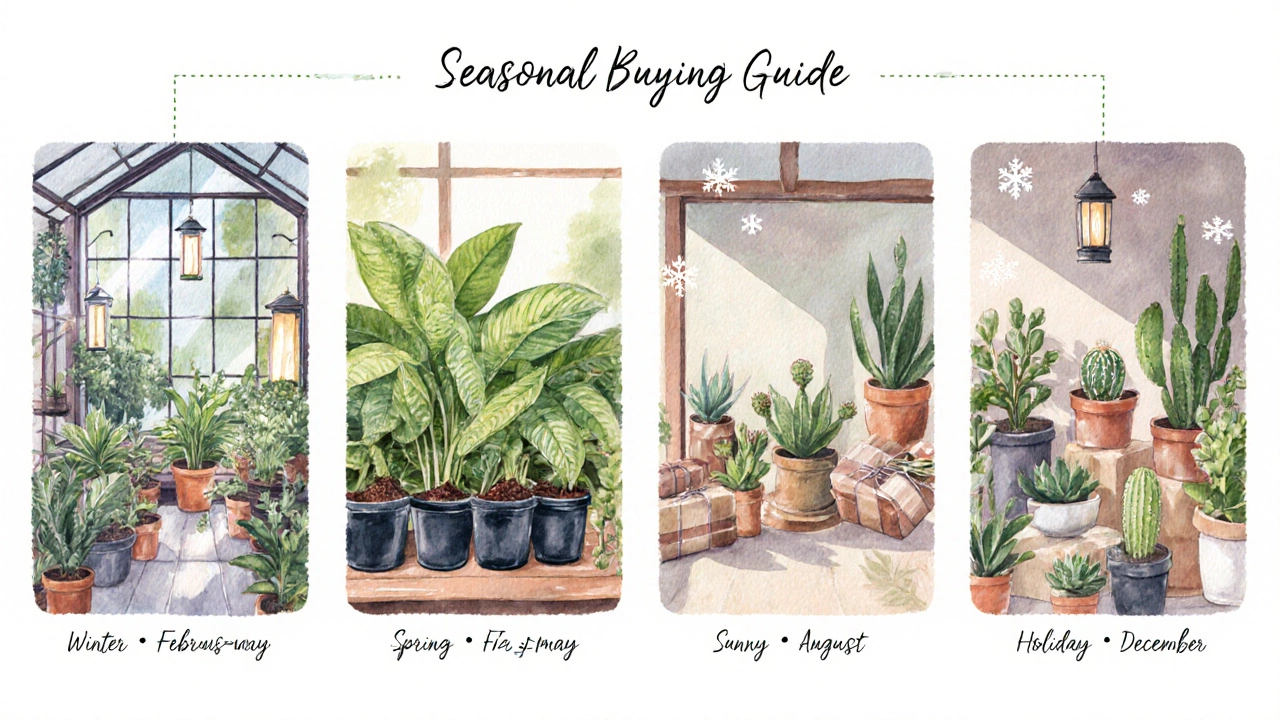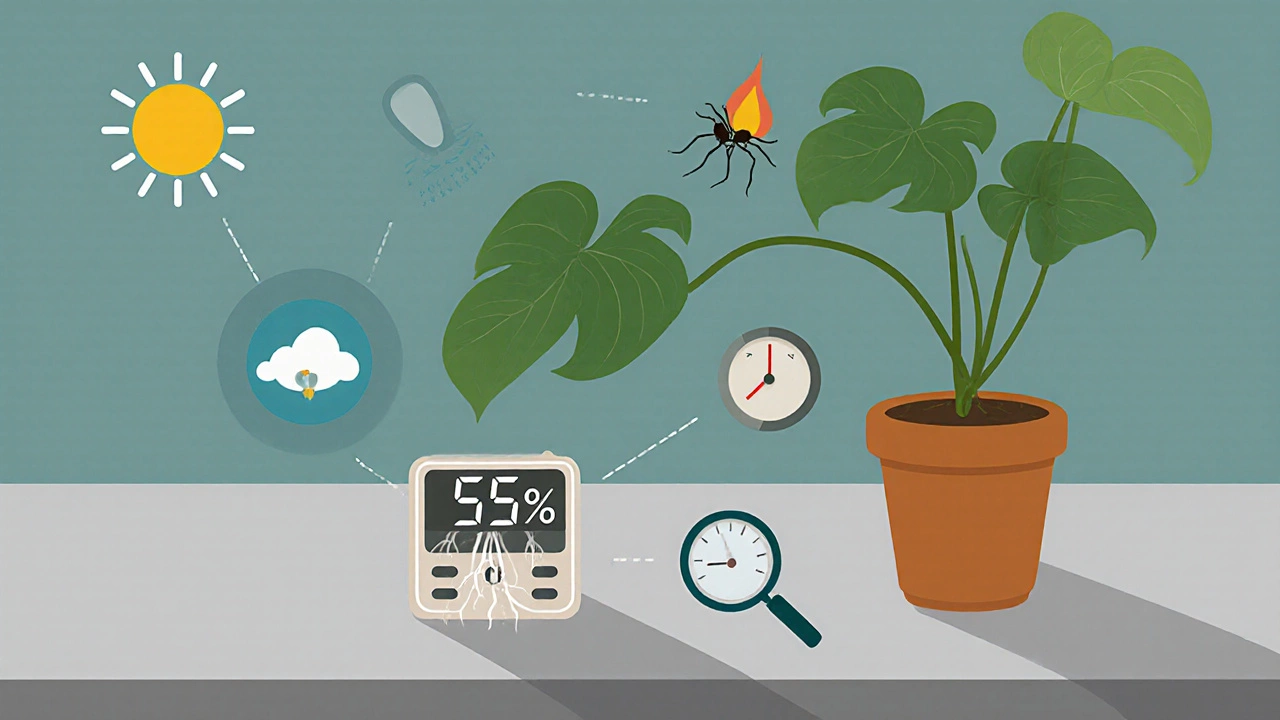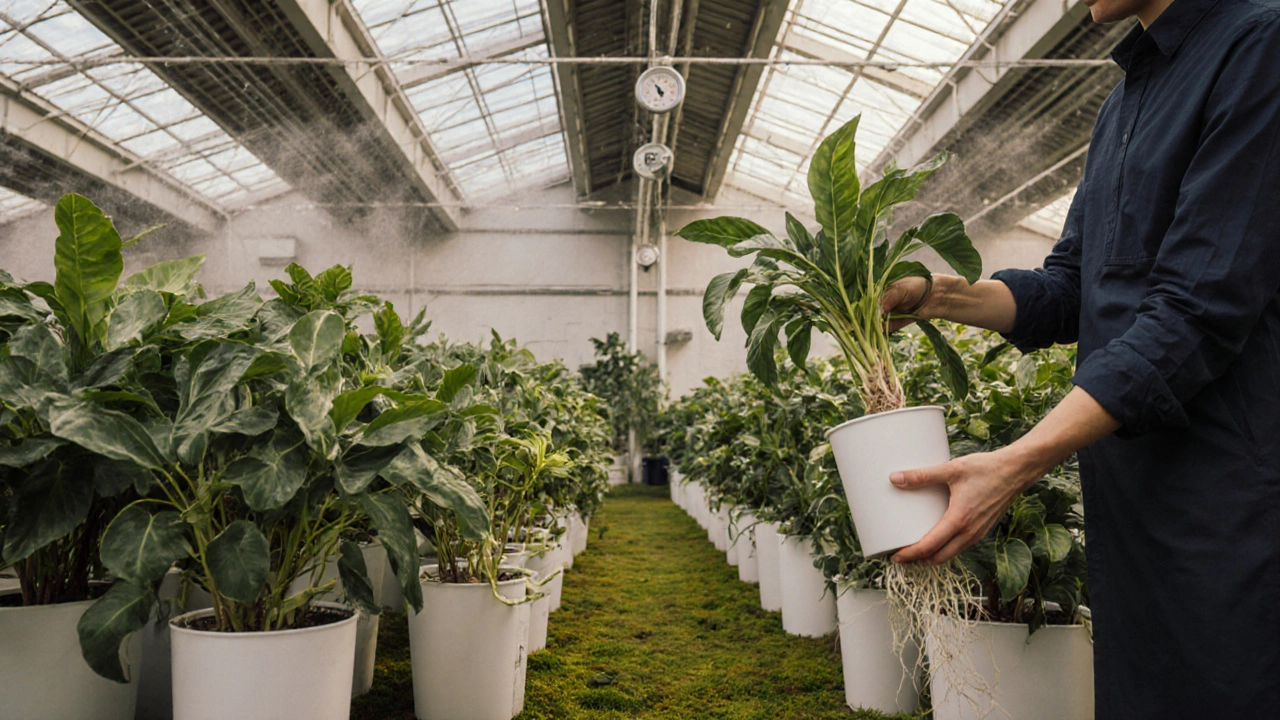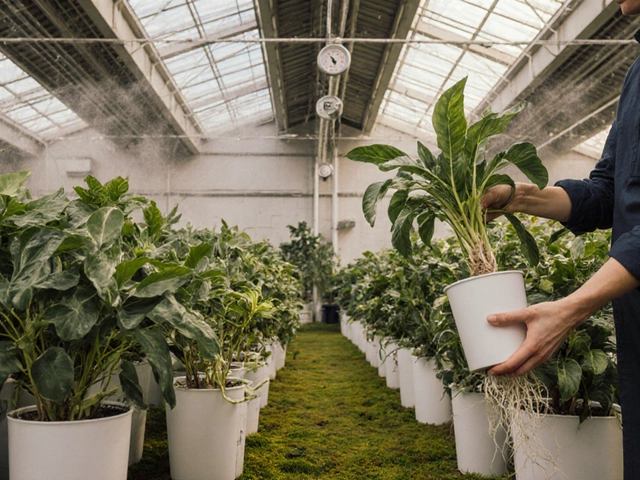Plant Buying Season Advisor
When to Buy Your Plant
Select a plant and see if your current season is optimal for purchase based on growth cycles and nursery patterns.
When it comes to indoor gardening, Indoor plants are green living companions that thrive inside homes, offices, or any indoor space with appropriate care. Picking the best time to buy indoor plants can save you money, ensure healthier growth, and make your space look vibrant year‑round.
Key Takeaways
- Late winter to early spring (January-April) offers the widest selection and healthiest stock.
- Mid‑year sales (June-August) are great for fast‑growing foliage but may lack variety.
- Holiday promotions (October-December) give deep discounts, yet plants may be stressed from shipping.
- Match buying windows to each plant’s Growth cycle for optimal long‑term health.
- Check nursery conditions - light, temperature, and humidity - before committing.
Why Seasonality Matters for Indoor Plants
Even though indoor plants live inside, they’re still subject to the same biological rhythms as their outdoor cousins. Seasonality influences seed germination, leaf emergence, and root development. Nurseries usually stock plants that are in a growth spurt because they’re easier to transport and establish quicker in a new pot.
For example, many foliage plants enter a dormant phase during the cold months. Buying them in late winter means you’re getting a plant that’s just about to “wake up,” so it will start putting on new growth as the days get longer. Conversely, purchasing a plant in the height of summer can lead to shock if it’s already exhausted from a scorching growing season.
How Plant Growth cycle Guides Your Purchase Timing
Each species follows a predictable cycle:
- Propagation phase - seedlings or cuttings are easiest to find in nursery catalogs.
- Active growth phase - plants are lush, have vibrant foliage, and root quickly after repotting.
- Dormancy - slower metabolism, fewer new leaves, and higher susceptibility to transplant shock.
When you align your buying window with the propagation or early active growth phases, you give the plant a head start. That’s why most experts recommend shopping from January through April for most common indoor species.

Retail Sale Patterns that Affect Prices
Nurseries and big‑box retailers often schedule sales around retail calendars rather than plant biology. Understanding these patterns helps you snag the best deals.
- New‑year inventory refresh (January) - suppliers bring fresh stock from greenhouses; prices are competitive.
- Spring clearance (April-May) - excess stock is discounted to make room for summer varieties.
- Mid‑year promotions (June-August) - “back‑to‑school” or “summer garden” sales; often limited to fast‑growing, cheap foliage.
- Holiday specials (October-December) - Black‑Friday and Christmas bundles; deep discounts but shipping stress is higher.
What to Check at the Plant nursery Before Buying
Even in the perfect season, a poorly run nursery can ruin a plant’s chances. Use this quick checklist:
- Light quality: Look for bright, even light. Plants should have firm, upright stems, not elongated “leggy” growth.
- Temperature: Ideal indoor nursery temps sit between 18‑24 °C (65‑75 °F). Too warm can stress roots; too cold slows growth.
- Humidity: Humidity around 40‑60 % keeps foliage crisp. Dry air often shows as brown leaf edges.
- Root health: Gently lift the plant; healthy roots are white and tightly bound, not brown or mushy.
- Pest inspection: Spot any spider mites, mealybugs, or fungal spots before you buy.
Best Buying Windows for Popular Indoor Species
| Plant | Ideal Buying Month(s) | Why it works |
|---|---|---|
| Snake Plant (Sansevieria) | January-March | Plants are in active growth; roots recover quickly after repotting. |
| Pothos (Epipremnum aureum) | d>February-AprilVigorous leaf production makes cuttings easy to establish. | |
| Fiddle Leaf Fig (Ficus lyrata) | March-May | New leaves are emerging; plant tolerates repotting well. |
| ZZ Plant (Zamioculcas zamiifolia) | January, September-October | Hardy storage roots survive short‑term stress; best prices in winter sales. |
| Peace Lily (Spathiphyllum) | April-June | Flower spikes form after the plant has settled from new potting. |

Common Mistakes and How to Avoid Them
Buying during a heatwave. Even indoor plants suffer if the nursery’s temperature spikes above 30 °C (86 °F). The roots can scorch, leaving the plant wilted once you bring it home.
Skipping the humidity check. Dry indoor air in winter can cause leaf tip burn. Choose a nursery that uses misting systems or humidifiers.
Assuming all plants are ready year‑round. Some tropical species need a cool rest period; buying them in late summer can lead to growth lag.
Putting It All Together: A Buying Timeline for 2025
Here’s a quick month‑by‑month guide you can print or bookmark:
- January: Stock up on propagation‑ready foliage (snake plant, ZZ plant). Look for “new‑year” discounts.
- February-March: Ideal for fast‑growers like pothos and philodendron. Check light and temperature.
- April-May: Prime for larger statement plants (fiddle leaf fig, monstera). Expect spring clearance sales.
- June-August: Mid‑year sales for budget-friendly succulents and cacti; avoid large foliage that’s been in the sun for months.
- September-October: Early holiday promotions; good time for hardy plants like ZZ and snake plant again.
- November-December: Deep discounts but beware of shipping stress. Choose plants with sturdy root systems.
Frequently Asked Questions
When is the absolute cheapest time to buy indoor plants?
Winter clearance (January‑February) and post‑Christmas sales (late December) usually offer the deepest discounts, especially on fast‑growing foliage.
Do indoor plants really have a ‘season’?
Yes. Even indoors, plants follow natural cycles of growth, dormancy, and propagation that are tied to daylight length and temperature.
Can I buy indoor plants in the middle of summer without problems?
You can, but choose species that tolerate heat (e.g., succulents, ZZ plant) and watch for signs of stress like wilted leaves.
What should I look for in a plant’s root system before buying?
Healthy roots are white, firm, and spread evenly. Avoid brown, mushy, or circling roots, which indicate stress.
Do holiday sales affect plant health?
Plants sold during heavy holiday promotions often endure longer shipping times and less optimal storage, so inspect them carefully for leaf damage or pest signs.


